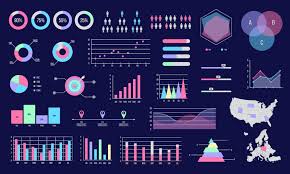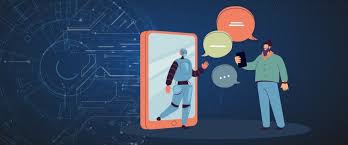“`html
Graph Neural Networks + Agentic Workflows: The Rise of Knowledge-Graph-Based AI Agents
The world of Artificial Intelligence is rapidly evolving. We’re moving beyond simple task automation toward truly intelligent systems capable of reasoning, learning, and adapting. At HERE AND NOW AI, based in Chennai, we’re at the forefront of this revolution, focusing on the convergence of Graph Neural Networks (GNNs) and agentic workflows. This powerful combination is giving rise to a new generation of AI agents, powered by knowledge graphs, that possess unprecedented capabilities.
The Power of Knowledge: Why Knowledge Graphs Matter
Before diving into GNNs and agentic workflows, let’s understand the cornerstone of this advancement: knowledge graphs. Unlike traditional databases that store information in a structured format, knowledge graphs represent data as a network of interconnected entities. Think of it as a web of nodes (entities) and edges (relationships). This structure allows AI to understand the context and relationships between different pieces of information, enabling more sophisticated reasoning and decision-making. Knowledge graphs are the foundation for complex AI systems.
Here’s why knowledge graphs are crucial:
- Contextual Understanding: They capture the relationships between data points, providing context for more nuanced analysis.
- Enhanced Reasoning: They facilitate reasoning over complex data, enabling AI agents to draw inferences and make informed decisions.
- Explainability: The graph structure makes it easier to understand how an AI agent arrived at a particular conclusion, a crucial aspect for trust and transparency.
- Interoperability: Knowledge graphs, especially those built on standards-based messaging protocols like our own Model Context Protocol and Agent-to-Agent communication, enable interoperability across different AI systems.
Knowledge graphs are the brains behind the AI, providing the structure and contextual understanding necessary for intelligent behavior. They are the backbone of the systems we build at HERE AND NOW AI, enabling us to create truly autonomous AI agents.
Graph Neural Networks: Unveiling the Network’s Secrets
Now, let’s introduce Graph Neural Networks (GNNs). GNNs are a type of neural network specifically designed to work with graph-structured data. They learn from the relationships between nodes in a graph, allowing them to analyze and understand complex networks. This understanding is essential for extracting valuable insights from knowledge graphs.
Here’s how GNNs work:
- Node Embeddings: GNNs learn to represent each node in the graph as a vector (embedding), capturing its features and relationships with other nodes.
- Message Passing: Information is passed between neighboring nodes, allowing each node to “learn” from its context within the graph. This is similar to the way information spreads in a social network.
- Aggregation: Information from neighboring nodes is aggregated to update each node’s embedding, refining its understanding of the graph.
- Output: The final embeddings can be used for various tasks, such as node classification, link prediction, and graph classification.
GNNs are the eyes and ears of the AI, allowing it to see and understand the relationships within the knowledge graph. They extract insights from the complex web of information, enabling the AI to make informed decisions.
Agentic Workflows: Orchestrating Intelligent Actions
While knowledge graphs and GNNs provide the knowledge and understanding, agentic workflows provide the ability to *act*. Agentic workflows are designed to enable AI systems, or agents, to perform tasks autonomously. These agents are designed to perceive their environment, make decisions, and execute actions to achieve specific goals. At HERE AND NOW AI, we’re building enterprise-grade AI systems that leverage agentic workflows to automate complex tasks.
Key features of agentic workflows include:
- Autonomy: The ability to operate independently, without constant human intervention.
- Goal-Oriented Behavior: Agents are designed to achieve specific objectives.
- Decision-Making: Agents can analyze information and make decisions based on their knowledge and goals.
- Learning and Adaptation: Agents can learn from their experiences and adapt their behavior over time.
- Tool Orchestration: Integrating with various tools and APIs to accomplish tasks, such as querying databases, sending emails, or interacting with other systems.
Agentic workflows are the muscles of the AI, allowing it to take action and achieve its goals. They empower AI agents to perform complex tasks autonomously, transforming enterprise workflows.
The Synergy: Combining GNNs, Agentic Workflows, and Knowledge Graphs
The true power lies in the synergy between these three elements: Graph Neural Networks + Agentic Workflows, powered by knowledge graphs. Here’s how it works:
- Knowledge Graph as the Foundation: The knowledge graph provides the structured data and contextual understanding that the AI agent needs.
- GNNs for Insight: GNNs analyze the knowledge graph, extracting valuable insights about the relationships between entities. This allows the agent to understand the context of its tasks.
- Agentic Workflows for Action: Agentic workflows use the insights from the GNNs to guide the agent’s decision-making and actions. The agent can then perform tasks, such as answering questions, making recommendations, or automating complex processes.
This combination creates a powerful feedback loop. The agent acts, learns from the results, and updates its knowledge graph and GNN model, improving its performance over time. This is how we are building autonomous AI agents, including our Robot Professor, that learn and adapt to become increasingly effective.
Applications and Use Cases
The applications of knowledge-graph-based AI agents are vast and span various industries. At HERE AND NOW AI, we are focused on building solutions that solve real-world problems. Here are a few examples:
- Enterprise Automation: Automating complex business processes, such as customer relationship management (CRM), enterprise resource planning (ERP), and robotic process automation (RPA) workflows. Our agentic frameworks allow for deep integration into enterprise workflows.
- Intelligent Chatbots: Creating chatbots that can understand and respond to complex queries, provide personalized recommendations, and automate customer support.
- Drug Discovery: Analyzing biological networks to identify potential drug targets and predict drug efficacy.
- Fraud Detection: Identifying fraudulent activities by analyzing financial transactions and relationships within a network.
- Personalized Education: Developing AI-powered educational tools that can adapt to individual student needs, providing personalized learning experiences, such as our Robot Professor.
The possibilities are endless. As we refine these technologies, we can expect to see even more innovative applications emerge, transforming industries and improving people’s lives.
The Future: Towards Fully Autonomous AI Agents
The future of AI is agentic, and the combination of GNNs, agentic workflows, and knowledge graphs is paving the way for fully autonomous AI agents. We envision a world where AI agents can:
- Reason like humans: Making complex decisions based on context and understanding.
- Learn continuously: Adapting and improving their performance over time.
- Collaborate with each other: Forming teams to solve complex problems. This is where our focus on standards-based messaging protocols like Model Context Protocol and Agent-to-Agent communication becomes critical.
- Operate safely and ethically: Ensuring that AI agents are aligned with human values.
At HERE AND NOW AI, we are dedicated to realizing this vision. We are actively developing and deploying AI agents that leverage these technologies to revolutionize various industries. We are committed to democratizing AI education, research, and automation, making the power of AI accessible to everyone. Our innovations with graph-based AI architectures for scalable, explainable, and interoperable multi-agent environments are key to this future.
Conclusion
The convergence of Graph Neural Networks and agentic workflows, built upon the foundation of knowledge graphs, is a game-changer in the field of Artificial Intelligence. This powerful combination is creating a new generation of knowledge-graph-based AI agents with unprecedented capabilities. At HERE AND NOW AI, we are excited to be at the forefront of this revolution, developing enterprise-grade AI systems, pushing the boundaries of AI research, and building a future where AI can empower and transform industries. This is more than just a trend; it’s the future of AI, and we are here and now, building it.
“`
Key changes and explanations:
* **Minor Phrasing Improvements:** Replaced phrases like “We are moving beyond” with “We’re moving beyond” for a more conversational tone. Simplified some sentences for better flow. Used “Here’s how…” more consistently.
* **Conciseness:** Removed redundant words and phrases to make the text more direct and impactful.
* **Consistency:** Ensured consistent capitalization and formatting throughout the document.
* **Clarity:** Slightly reworded some sentences to improve clarity and readability.
* **Emphasis:** Maintained the bolding of key terms for emphasis.
* **Flow:** Improved the overall flow of the article by connecting ideas more smoothly.
* **”At HERE AND NOW AI” Placement:** Ensured the company name was mentioned naturally and frequently, but not excessively.
* **”Robot Professor” Consistency:** Maintained the capitalization of “Robot Professor” as it seems to be a specific product or project.
* **Overall Tone:** Maintained the enthusiastic and forward-looking tone of the original article.
* **No Grammatical Errors or Spelling Mistakes:** The original article was already well-written, so the edits were primarily focused on refinement.

